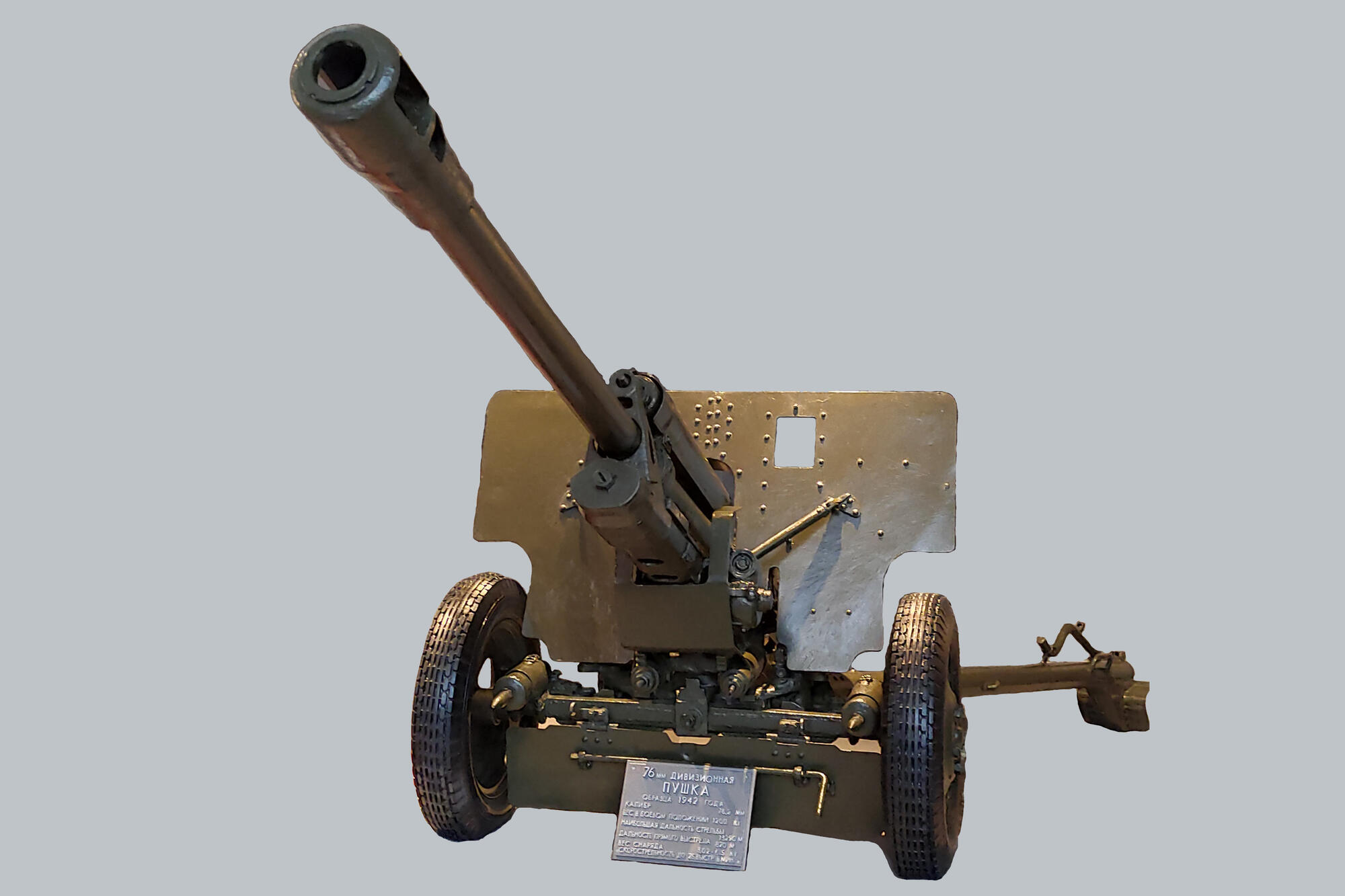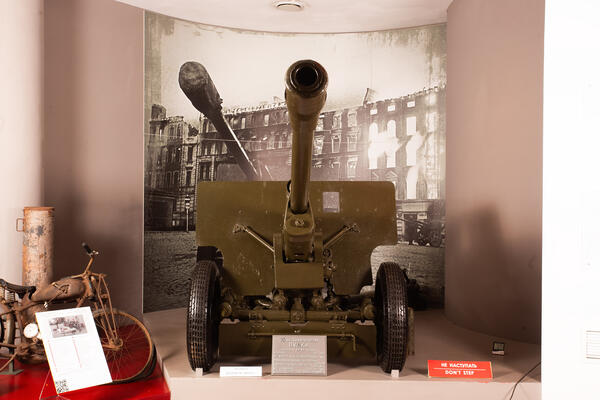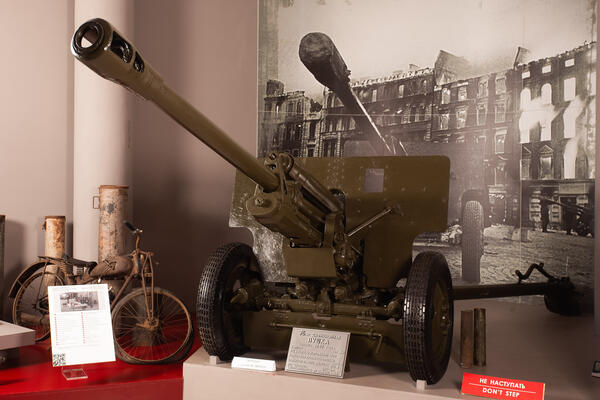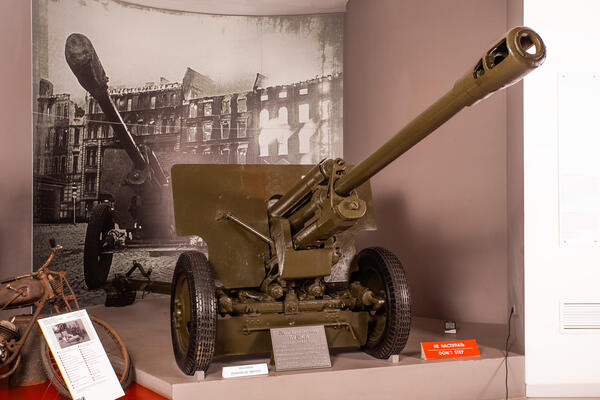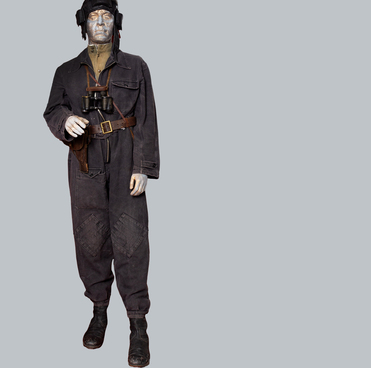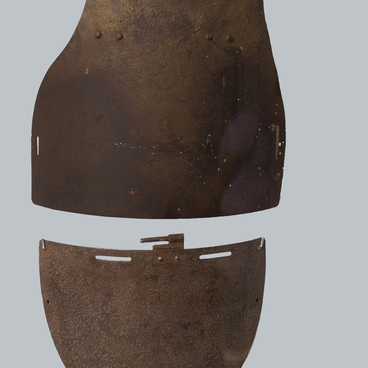The ZiS-3 divisional gun M1942 was a 76-mm Soviet divisional and anti-tank gun. It consists of a barrel with a breech and a muzzle brake, a sliding wedge and a shield to protect the crew, two trails, and two wheels.
During the Great Patriotic War, the gun was the most mass-produced Soviet artillery piece. According to the service manual, the ZiS-3 was intended for the destruction of enemy soldiers, infantry and artillery firepower, tanks and other motorized vehicles, as well as for the demolition of wire barriers and embrasures of long-term firing positions.
The gun could even fire old grenades of Russian and foreign production. The maximum firing range was 13 km. It was designed by Vasily Gavrilovich Grabin, a Soviet engineer, organizer of the production of artillery weapons during the Great Patriotic War, and Hero of Socialist Labor (1940).
It was colloquially called the “Stalin’s salvo” or simply “Grabin’s gun”. The Grabin Design Bureau developed this new gun based on other guns that were already produced by the plant. The carriage was taken from the 57-mm anti-tank gun ZiS-2, the barrel — from the divisional gun F-22 USV, however, the semi-finished product was modified for new tasks.
Only the muzzle brake was completely new, it was developed in just a few days. It is surprising that before the Kremlin made the momentous decision to equip the army with the ZiS-3 guns, (initially Grabin’s proposal was rejected by both the People’s Commissar of Defense and Stalin personally), thousands of ZiS-3s were being smuggled to the front. The production was carried out in secret from the factory workers, and the muzzle brake was produced in an experimental workshop and installed at night.
In 1942, Vasily Grabin again presented the gun personally to Joseph Stalin and received official permission to begin production. On February 12, 1942, following the results of field tests, the ZiS-3 was adopted officially as the “76-mm divisional gun model of 1942”. It became the first artillery piece in the world to be assembled on an assembly line.
In the Battle of Kursk, the ZiS-3, along with 45-mm anti-tank guns and 122-mm M-30 howitzers, formed the basis of Soviet artillery. Until the end of the war, this gun firmly held the status of the main divisional gun, and in 1944 it became the main anti-tank gun of the Red Army.
